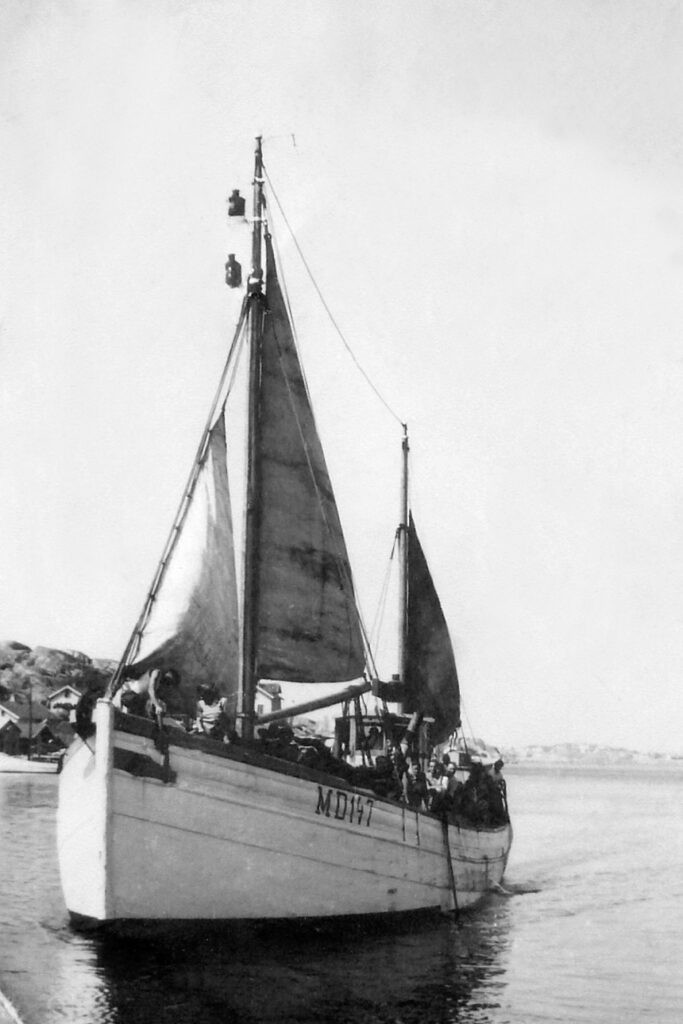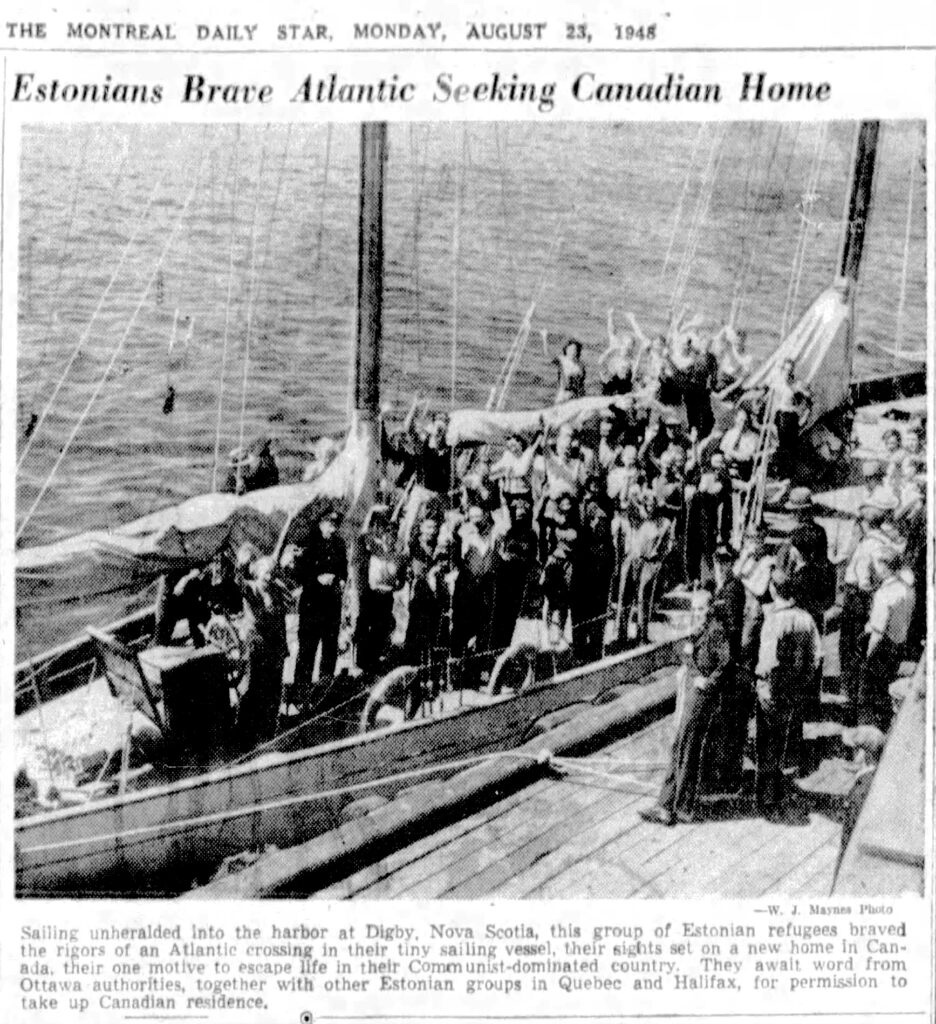Boats

The Östervåg fishing boat.
ÖSTERVÅG
The Östervåg was the fourth Viking boat to land in Canada, arriving in Halifax on August 22, 1948, just two days after the Capry. Evald Past, the boat’s captain, had graduated from the first class of the Tallinn Maritime School in 1924 and was a well-known maritime historian before the Second World War. In 1944, he escaped to Sweden with his family and worked on Swedish ships until 1947.
In 1948, Past and four other Estonians pooled their funds to buy the Östervåg for 55,000 Swedish kronor. Built in 1890 in Grimsby, England, the 62-ton fishing vessel was 70 feet long (21.5 meters) and 20 feet wide (6 meters) and was fitted with a two-cylinder, 135-HP engine. The Östervåg was the same kind of North Sea trawler as the Prolific, another Viking boat that had left Uddevalla, Sweden, for the United States a few days earlier.
Captain Past owned 29 out of the 100 shares in the Östervåg. Toivo Neemre bought 20 shares, Jaan Järv owned 18, Helmer Mäsak had 18, and Lembit Jänes had 15. Under Past’s direction, preparations for the journey took place in Rönnäng harbor, north of Göteborg, Sweden.
Around 9 p.m. on July 28, 1948, the Östervåg sailed out of nearby Marstrand harbor after being approved for departure by the Swedish customs authorities. Seventy-five refugees were on board, including 38 men, 22 women, and 15 children, 11 of whom were under six years old. There were 71 Estonians, three Poles, and a Karelian. The crew relied on “a watch, a compass, and an old-fashioned sextant” to navigate their way to Scotland, according to an August 18 article in the Canadian Halifax Mail newspaper.

The Montreal Star, Canada, August 28, 1948
The Halifax Herald, another paper, published interviews with Captain Past during and after the journey. On August 3, during the stop in Scotland, he announced, “There are many Estonian refugees anxious to go to Canada from Sweden. It is too hot there near Russia.” After reaching Canada, he said, “We saw the Russians once and we saw the Germans once, and we fled our homes because we knew when the Germans left, the Russians would come again and that would be bad. We know the Russians.”
Captain Past had planned the journey carefully. Concerned about Soviet ships patrolling the English Channel and hearing stories about kidnapped refugees, he developed two routes: An official one that went through the English Channel and the one he actually used that went through Scotland, with a stop in Stornoway. Since the Astrid had docked there only a few days earlier, the townspeople and mayor were familiar with the refugees’ plight and welcomed them, providing assistance and food.
In Stornoway, there was a fortunate coincidence that later made it easier for the refugees to obtain visas in Canada.
Alexander E. Kerr, president of Dalhousie University in Halifax, was on vacation nearby and heard about the Viking boat and its plans to sail to Canada. He visited the Östervåg and asked how he could help. Past’s only request was for aid in obtaining permission to land in Halifax, which Kerr successfully arranged.
As the Östervåg prepared to leave, a British naval inspector boarded and ruled the boat was unseaworthy to cross the Atlantic with so many passengers on board. He permitted it to leave the harbor only if Past sailed it back to Sweden. Past agreed but once the ship left Stornoway on August 5, he turned the ship’s bow west and crossed the Atlantic.
Captain Past’s original plan was to sail directly to Halifax, but one male passenger hadn’t eaten for eight days due to severe seasickness, so on August 17 the ship pulled into Saint John harbor, which was closer. The Östervåg had crossed the Atlantic in just 12 days, despite sailing into headwinds at the end. The passenger recovered and the ship resumed sailing the next day, reaching Halifax on August 22. The entire ocean voyage had taken just 25 days.
After disembarking, the refugees spent two months in an immigration facility where background checks and medical examinations were carried out. On October 15, 1948, the passengers of the Astrid, Atlanta, Capry, and Östervåg, which had all landed during a 10-day period, were allowed to enter Canada legally.
Before they left Halifax, the Östervåg and Capry’s passengers organized a farewell party for more than 300 guests. Afterward, most of the Estonian refugees settled in Toronto, where an émigré community was growing rapidly.
Known crew and passengers:
- Captain Evald Past
- Toivo Neemre
- Jaan Järv
- Helmer Mäsak
- Lembit Jänes, 9 months
- Harr Rommus
- Oskar Viikholm (Wiikholm)
Photograph reproduced with permission from the Estonian Maritime Museum.
